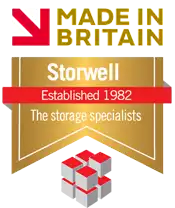A Guide to Understanding Warehouse Partitioning Systems
Optimising space in your warehouse is crucial, and Warehouse Partitioning Systems play a key role in this process.
These systems offer versatile solutions for separating, dividing and organising, the use of your Warehouse space.
In this guide, we will explore the various steel partitioning options available, including warehouse steel partitions, wire partitions, and more.





